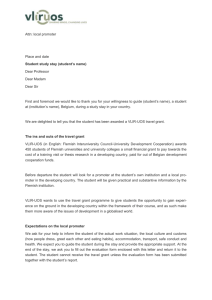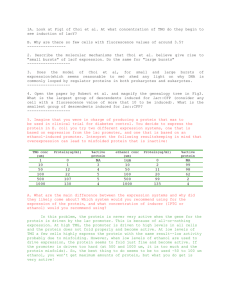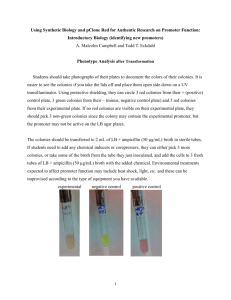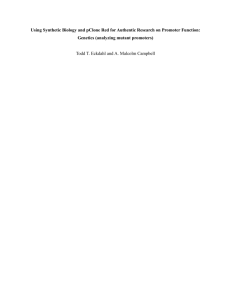Lab Manual Week #5
advertisement
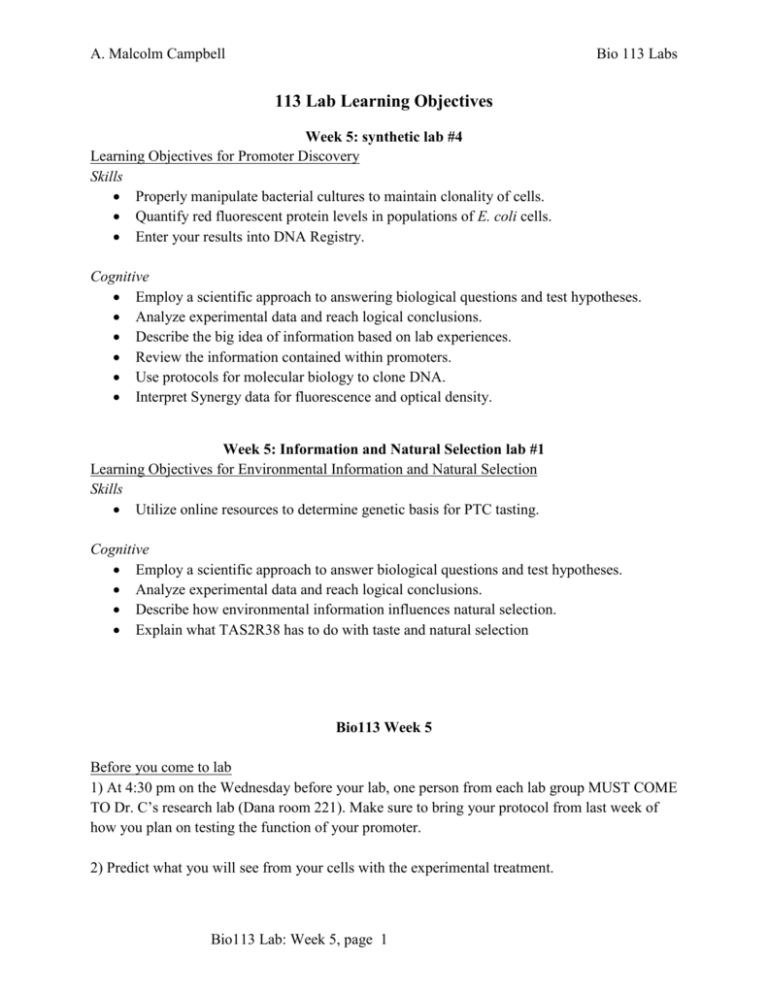
A. Malcolm Campbell Bio 113 Labs 113 Lab Learning Objectives Week 5: synthetic lab #4 Learning Objectives for Promoter Discovery Skills Properly manipulate bacterial cultures to maintain clonality of cells. Quantify red fluorescent protein levels in populations of E. coli cells. Enter your results into DNA Registry. Cognitive Employ a scientific approach to answering biological questions and test hypotheses. Analyze experimental data and reach logical conclusions. Describe the big idea of information based on lab experiences. Review the information contained within promoters. Use protocols for molecular biology to clone DNA. Interpret Synergy data for fluorescence and optical density. Week 5: Information and Natural Selection lab #1 Learning Objectives for Environmental Information and Natural Selection Skills Utilize online resources to determine genetic basis for PTC tasting. Cognitive Employ a scientific approach to answer biological questions and test hypotheses. Analyze experimental data and reach logical conclusions. Describe how environmental information influences natural selection. Explain what TAS2R38 has to do with taste and natural selection Bio113 Week 5 Before you come to lab 1) At 4:30 pm on the Wednesday before your lab, one person from each lab group MUST COME TO Dr. C’s research lab (Dana room 221). Make sure to bring your protocol from last week of how you plan on testing the function of your promoter. 2) Predict what you will see from your cells with the experimental treatment. Bio113 Lab: Week 5, page 1 A. Malcolm Campbell Bio 113 Labs 3) Answer each of these four questions in two sentences or less. A) Are promoters more like on/off switches, or rheostats? B) What could you do to be sure you successfully cloned the promoter you wanted to clone? C) How will you calculate the level of fluorescence of your cells to take into account that different treatments may produce different densities of cells? D) What is TAS2R38 and what does it have to do with sensing environmental information? ************************************************************************** NOTE: At 4:30 pm on the Wednesday before lab this week, one person from each lab group MUST COME TO Dr. C’s research lab (Dana room 221). Please be on time. We need to start your transformed cells growing +/- the treatment conditions. See page 2 for details. ************************************************************************** Bio113 Lab: Week 5, page 2 A. Malcolm Campbell Bio 113 Labs Week 5 In Lab Information: Design and Build a New Promoter (an 8 week project) 1) Take photos of your 3 plates with colonies from last week, and your cells that have grown overnight. These photos can be useful in your presentations a few weeks from now. 2) Use the Synergy machine to measure how much RFP each culture of cells is producing. Be sure to include wells of the appropriate control cell populations. Some of you will have to wait after treating your cells during lab. 3) Use Excel to quantify the amount of RFP fluorescence/number of cells in each population. You will generate a graph with these data and upload a screenshot of the graph for use on the Registry. 4) Enter your results into the Registry of DNA parts, including a graph for your new promoter. Search for your part number and log in to make changes. Information and Evolution: Genetics of Perceiving Danger Module (an 8 week project) 5) Discuss how you could genotype a person for their TAS2R38 alleles. Starting next week, we will be using an original lab project developed by the summer 2012 RISE students at Davidson College. Bio113 Lab: Week 5, page 3
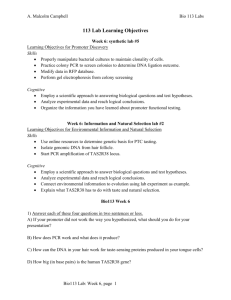
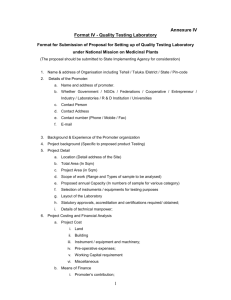
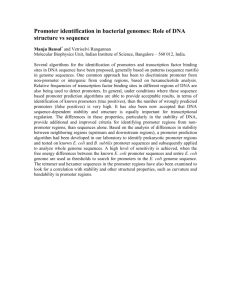
![2. Promoter – if applicable [2]](http://s3.studylib.net/store/data/007765802_2-78af5a536ba980fb6ded167217f5a2cf-300x300.png)



